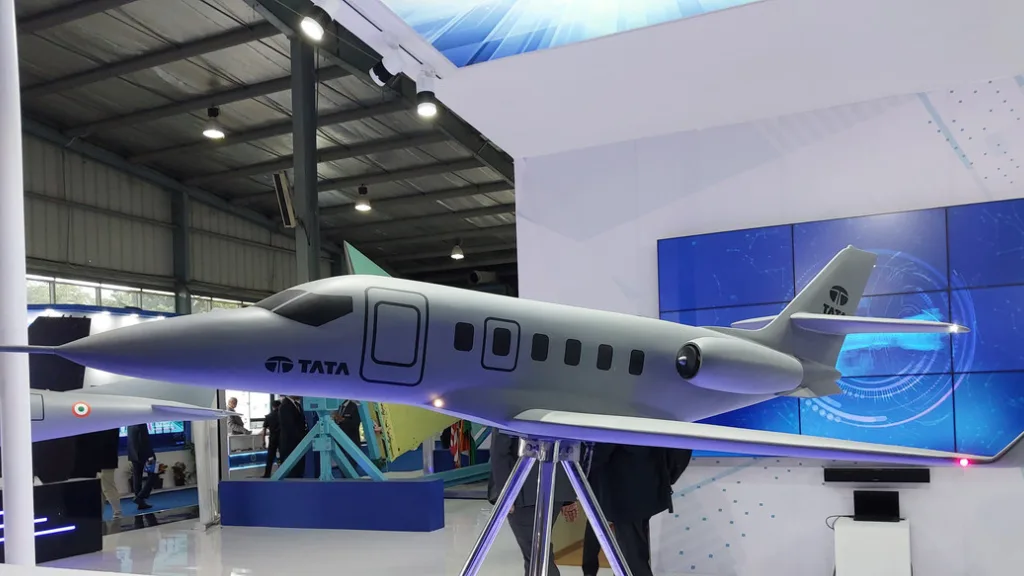The advancement of technology for national security has significantly increased in recent years. The launch of India’s inaugural jet-powered UAV by TATA marks a crucial achievement. This cutting-edge aircraft not only boosts India’s surveillance capabilities but also positions the nation as a strong contender in the global UAV sector.
Table of Contents
Understanding Jet-Powered UAVs
So, what exactly is a jet-powered UAV? Unlike traditional drones that rely on propellers, jet-powered UAVs use jet engines, which enable them to achieve higher speeds and longer flight durations. This technology is crucial in modern military operations, providing real-time data and reconnaissance while keeping human operators safe from harm. With TATA stepping into this arena, India is embracing a new frontier in aerial technology.
The Journey Behind TATA’s UAV Development
The development of this cutting-edge UAV was spearheaded by TATA Advanced Systems Limited (TASL). The journey began several years ago, driven by the need for more sophisticated defence solutions in a changing global landscape. With geopolitical tensions on the rise, the focus was clear: to create an advanced UAV capable of meeting diverse operational demands. The UAV underwent extensive testing, including both ground simulations and aerial trials, to ensure it meets the rigorous standards required by the Indian Armed Forces.
Key Features of TATA’s Jet-Powered UAV
1. Streamlined Design
One of the standout features of TATA’s UAV is its streamlined design. This aircraft is engineered for superior aerodynamics, enabling it to cruise at high altitudes while maintaining stability. The choice of lightweight materials not only enhances its structural integrity but also optimizes fuel efficiency, making it ideal for long-duration missions.
2. Impressive Performance
Performance is where this UAV truly shines. It boasts an extraordinary endurance, capable of flying for up to 30 hours on a single mission. This feature is essential for extended surveillance tasks. Additionally, the UAV can operate at altitudes reaching 26,000 feet, allowing it to soar above weather disruptions and maintain clear visibility during reconnaissance operations.
3. Advanced Technology Integration
TATA’s UAV incorporates state-of-the-art technology to enhance its operational capabilities. Equipped with high-resolution cameras and advanced sensors, this UAV can capture detailed imagery and gather comprehensive intelligence. Its sophisticated navigation systems allow for accurate data collection, critical for military decision-making. Moreover, the UAV’s ability to integrate with other technology platforms makes it an invaluable asset for intelligence analysis.
Strategic Importance of the UAV
The introduction of TATA’s jet-powered UAV is particularly significant for India’s defence strategy. With its real-time monitoring capabilities, this UAV strengthens the Indian Armed Forces’ ability to track borders and gather vital information swiftly. This technological leap not only enhances situational awareness but also provides a crucial edge in addressing security challenges in a rapidly evolving environment.
Applications in Military and Civilian Sectors
The potential applications of TATA’s UAV extend beyond military uses:
Military Operations
First and foremost, the UAV is a game-changer for reconnaissance missions. It provides commanders with timely data, allowing for informed decision-making during critical operations. This capability enhances mission effectiveness and success rates.
Civilian Uses
Beyond the military, the UAV has substantial implications for civilian applications. For instance, in disaster management, it can assist emergency responders by providing real-time assessments of affected areas. Its ability to monitor environmental changes is also important for tracking climate impacts. In agriculture, the UAV can evaluate large fields, helping farmers monitor crop health and optimize yields.
Challenges in the UAV Market
Despite its promise, TATA’s UAV faces several challenges. The UAV market is highly competitive, with established global players presenting significant competition. Securing adequate funding and expertise is crucial for advancing the project. Continuous investment in research and development will be key to keeping the UAV competitive and technologically advanced.
Future Prospects and Innovations
Looking ahead, the future for TATA’s jet-powered UAV is bright. Anticipated enhancements may include stealth capabilities, which would allow the UAV to perform covert operations undetected. Furthermore, increasing its payload capacity could enable it to carry more sophisticated equipment. Collaborations with international defence entities could open up new avenues for technological advancements and innovations.
Conclusion
TATA’s launch of India’s first jet-powered UAV is a remarkable achievement in the realm of defense technology. It signifies India’s commitment to advancing its capabilities and staying ahead in the global security landscape. As the nation invests further in such innovations, this UAV is poised to play a pivotal role in safeguarding India’s interests.
By understanding and keeping abreast of developments like these, we can appreciate how technological advancement shapes the future of defence in India. This UAV is not merely a new tool; it represents a bold step forward in India’s journey towards achieving self-reliance in defence technologies.
Frequently Asked Questions (FAQs)
- What is the primary function of TATA’s jet-powered UAV? The primary function of TATA’s jet-powered UAV is to enhance surveillance and reconnaissance capabilities, making it a vital tool for military operations and disaster management.
- How long can the UAV stay in the air during a mission? TATA’s UAV can operate for up to 30 hours on a single mission, enabling extensive surveillance capabilities.
- What altitude can the UAV achieve? The UAV can fly at altitudes of 26,000 feet, helping it maintain a clear line of sight during missions.
- In what ways does this UAV outperform other UAV technologies? TATA’s jet-powered UAV offers improvements in speed, endurance, and advanced payloads compared to many existing models, positioning it as a crucial asset in defence operations.
- What challenges does TATA face in the UAV market? TATA faces competition from established international manufacturers, and securing funding and technological expertise is critical to its ongoing success.
- What future improvements are expected for this UAV? Expected future enhancements include stealth capabilities and increased payload capacity, along with potential collaborations for advanced technology integration.
Learn more at DefenceNewsIndia.in – your trusted source for updates on India’s defense, aerospace, and strategic innovations.
